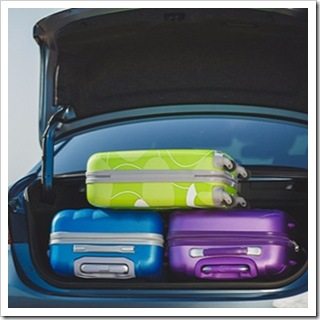 Buckle up, our traveling season is upon us. Despite the saying “getting there is half the fun,” planes, trains, and automobiles can put a real strain on our holiday fun this season. So let’s start this season off right, and follow these tips to survive the physically demanding prospect of traveling to your holiday destination even if your final destination is just to relax without your shoulders in your ears and suffering from headaches.
Buckle up, our traveling season is upon us. Despite the saying “getting there is half the fun,” planes, trains, and automobiles can put a real strain on our holiday fun this season. So let’s start this season off right, and follow these tips to survive the physically demanding prospect of traveling to your holiday destination even if your final destination is just to relax without your shoulders in your ears and suffering from headaches.
Are You Ready?
Travel should be looked on as a form of strenuous exercise that requires a period of warming up and cooling down. Warm up and stretch before you travel, and cool down with a brisk walk when you arrive to reinvigorate your hamstring and calf muscles.
One By Car
If you are driving here are a few great road trip tips:
- Adjust the seat, so you’re as close to the wheel as you can be while still feeling comfortable. Keep the knees just a little bit above the hips.
- Use a back support if your car seat does not provide adequate support by design. The added back support will help reduce the risk of lower back pain and injury. The support should be widest between the lowest ribs and the waist.
- Exercise your legs while driving to keep the blood flowing and limit any swelling or pain. Count to 10 while spreading your toes wide; count to 5 while tightening your calf muscles, followed by your thigh muscles, then your glutes (butt); roll your shoulders back and forward (keeping your hands on the wheel!).
- Alternate holding the wheel with your hands at the 2 and 7 o’clock positions, and then the 10 and 5 o’clock positions. Try not to grip the wheel too tightly, which reduces the circulation and increase fatigue in the muscles of the hands, wrists, and arms.
- Vary your focal point to reduce eye strain and headaches, but keep your eyes on the road.
- Take frequent breaks from driving; remember that fatigue behind the wheel can kill.
Two By Air
When traveling by air, here are great air mile friendly tips:
- Airline seats are incredibly spine-unfriendly. Standing up straight, familiarize yourself with the proper curve of your spine, then use rolled-up towels to recreate that curve when sitting down. Use another between your neck and the headrest.
- Bags heavier than 5-10% of your body weight should ideally be checked in rather than carried on. Lifting heavy bags into overhead lockers can hurt the spine. Whatever the weight of the bag, make sure you stand directly in front of the compartment and do not twist your back or neck when lifting.
- Under the seat, luggage should not be forced into using feet or hands while standing, which can cause muscle spasms given the confined and awkward space between the seats. Instead, sit down first, then push it in using both your hands and feet.
- Move about in your seat frequently to keep the blood flowing and guard against cramps and pins and needles. Massage your thighs and calves, then push up with your toes to shift your knees up and down. Use a bag to raise your feet higher.
- Don’t blast yourself with the overhead air vents which can cause your neck and shoulders to tense.
Three With Kids
Traveling with children can be challenging, but the most important aspect is to arrive safe and sound.
Here are a few safety tips when traveling with kids:
- Use an approved car seat appropriate to the age of the child when traveling in a car.
- Infant car seats should always face rearwards so that any impact is spread around the back and shoulders and not taken directly by the neck.
- A car seat should not be used in the front seat of a car where an airbag could deploy into it. Similarly, if the rear doors or the rear of the front seats are equipped with airbags, position the child seat in the center of the back seat to avoid it being hit by any of the deployed airbags.
- Secure the car seat as per instructions and make sure it is properly fixed in place and cannot shift. The seat should be at a 45-degree angle to properly support the child’s head.
- Traveling by air, check to see if your car seat can be used on this airline, which is safer than seating a child on your lap.
Make Sure To Add Us To Your Checklist!
Before you head out to your travel destination, this season make sure to add a spinal health checkup to your list of preparations! We will make sure you are in tip-top condition so you may enjoy every minute of your holiday!
For Your Health,
Dr. Mark Hardwick and Dr. Mitchell Jacobs
